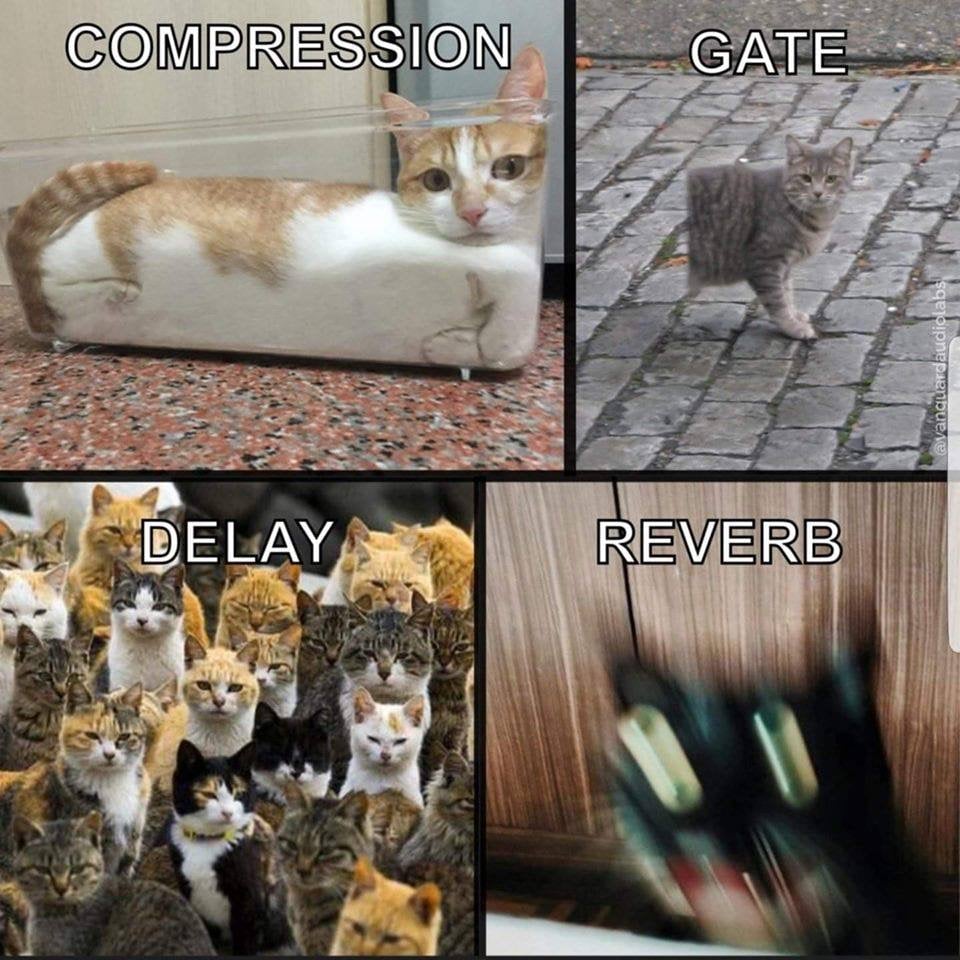This is the fourth in my series of posts on how to record your lectures.
Tl;dr: a little focused practice up front will help a lot: spend some time experimenting with positioning the microphone, and how you address it. Record a bunch of short takes saying the same 1-2 sentences and then listen and see what sounds best. Develop a performance style and persona matched to the medium.
The first instalment tells you to use a quilt or moving blanket. This is the most important thing in terms of sound quality for your students.
The second instalment tells you to record in shorter segments and not obsess over what you’ve recorded. This is the most important thing in terms of preserving your time and sanity.
You can skip the third post–don’t get hung up on the technical part of it unless you are really into that stuff.
This final instalment deals with some of the points of performance and technique. Once you have the moving blanket or quilt hanging up behind you, you can skip to this instalment with not much trouble.
—
Microphone technique is a huge topic and something a topic covered at length by professional singers, voice-over artists, engineers, and producers. Your goal in recording your voice is to produce something phonogenic, to use a term from Michel Chion. Ideally your voice recordings are “pleasing to hear,” which means they conform to the conventions of recorded voices. Do not confuse this with how your voice sounds in the room or in your head. Think of your voice more like clay you are moulding.
Step 1: make your space: microphone placement, room setup and level setting.
Close the windows, the door and turn off the fan. If you can. Make your space quiet, but don’t spend time worrying about incidental sounds from partners, pets or children–it’s not worth it–except the partner should not be having a loud conversation in the same room as you’re recording.
Once you have some absorption up behind you, you need to experiment with where the mic is relative to your mouth. Plan on spending an hour on this and then never thinking about it for the rest of the term.
A condenser mic, like the Blue Yeti that I recommended in my last post, can sit happily on your desk facing in your general direction. Probably 1-2 feet is a good range, and you don’t want it pointing exactly at your mouth. Try aiming it at your forehead, your nose, your chin, and your throat. If you aim at your mouth, aim for the side of the mouth. Then record a sentence and see which is most pleasing. You’re looking for clarity of speech, not too much sizzle, and not much room echo at all. Go listen to a CBC or NPR interview as a reference.
Whatever you do, never aim the mic directly at your mouth. The reason for this is simple: if you are going head on into the mic, it will overemphasize all sorts of mouth sounds. Plosives, which are the little explosive puffs of air that occur when you say “plosives” can boom; sibilance — the ssssss and ttttt sounds — get extra sizzly. Breath sounds get louder (great if you’re PJ Harvey but not if you’re trying to tell your students about a term that will be on the exam). If you find an ideal position but still have too much plosive sound, you can use a pop filter, or make a DIY one.
If you’re using a dynamic mic, like the SM7 I use, you want to get closer in. You can get right up to it, though I still some prefer a distance of a couple inches. Getting too close to any mic will produce a proximity effect, which is cool for that FM “voice of god” sound but might well be too much for most usage. It will also emphasize mouth sounds.
Also, if you are recording into a program that gives you a measurement of how loud your voice is coming in, I recommend coming in around -15db for your maximum levels. Note on loudness measurements: 0db is as loud as the medium will take, so all levels are measured in negative numbers: -10db is louder than -20db.
Step 2: technique. This is a bit more advanced but easy to grasp.
Baseline: Set yourself up in a steady position. Most profs will record sitting down but in most cases you’ll get more vocal power if you do it standing up. (With my paralyzed vocal cord, this is no longer the case for me, so YMMV). Once you have your position, that’s your baseline. When recording singers, I always put a book on the floor so they know where their start position is. Bonus: I try and pick an appropriate book.
Move as you get louder and quieter: You can change the sound and volume of your voice by moving. To produce an even sound, move back a little when you are louder, and move in closer when you are quieter. This produces the effect of dynamics but keeps the volume more constant, which is what listeners expect when they are listening to recorded voices. This makes lots of sense for rock singing, but a good lecture also has dynamics. You’ll want to practice this trick: ultimately, you want places to move to that also sound good (see step #1) so that you’re not, for instance, adding a bunch of sibilance as you edge in on the mic.
Step 3: performance (and media theory 101 applied to online teaching)–reinvent your persona
I’ve spend the summer listening to my prof friends complain about going online to teach their courses, losing the live interaction of the lecture hall or the seminar room. I’m right there with you. But your goal should not to be to reproduce the live lecture experience in a recording. Your goal should be to play to the features of the recording. This is media theory 101, but also good pedagogy.
The theatre is closed for Covid. I always think of lecturing as a performance. Many profs have stories of running into students somewhere around town, and the students essentially shocked to discover we exist outside the classroom. We are characters, whether we want to be or not. In a live lecture hall, we are doing something like theatre. I embrace this, all the way down to the stunts I pull to get my students attention, like staging a live dialogue in order to show how the conventions of shot-countershot editing work, or bringing in a bunch of flags and setting up a semaphoric telegraph to show that you don’t even need electricity for near-instantaneous communication. In the lecture hall, I address my students as a collective. When I say “you,” I mean “you all”–the second person plural. And of course I can also read the room. That’s not going to work in a recorded lecture.
Recorded lectures are not theatre. They are more relatives of radio, podcasting, or an old school land line phone call. So for me, that means the “you” I address is a collective of singular individuals. I will say the same thing to everyone, but everyone will listen separately; they will hear my speech as if it were addressed to them personally. So in practice, that means less of the theatrics and melodrama and bigness of the lecture hall, and more the intimacy of the radio or podcast persona.
So you need to find models that work for you. Take some time and listen to some spoken performances–radio shows, podcasts, radio theatre, spoken word, poetry (though watch out for “poet voice”–don’t do that), sound art, whatever, and see what grabs your attention as the kind of role you want to perform for your students.
Step 4: get used to being a personality
This is not the classroom. People are generally shy about hearing their own voices recorded until they are used to it. I don’t have any great advice here except that it’s normal to feel creeped out by the sound of your own recorded voice. The thing is, what others hear sounds nothing like the voice in your head. So do your best to ignore that and instead think of the recording of your voice as a mix of that sonic clay I discussed in steps 1 and 2, and the persona I’m telling you to construct in step 3.
Step 4.5 [Edit]: On the Facebook thread discussing this, Bob Fink (musicologist at UCLA) pointed out that even though he does not normally write out his lectures, he does write out his recorded lectures so he can focus on performance. And avoid tangents. Dan Ryan, (sociologist at U of Toronto) chimed in to say the same thing and added these helpful links on how to write for radio. Thanks to both of them. I have no tried this but I think I will go for a little more structure.
Step 5: editing and mixing (most people should skip this part)
This is a whole advanced topic. As I mentioned in my 2nd post on the topic, it’s better to record short bits and then edit them together, rather than a long bit all in one take. Editing them together and keeping a consistent volume should be enough for most people.
I’m going to skip the primer on signal processing, but for the nerds, here’s a little more detail on what I do for myself. Absolutely none of this is necessary for a decent sounding lecture.
–downward expansion: because of the paralyzed vocal cord and a bit of asthma, I’m a loud breather on mic. An expander makes the breaths quieter than the speech and makes my voice sound more, well, abstract. And it’s preferable to a noise gate which gets rid of the breathing entirely, and therefore makes me sound like an android.
–about 2db compression on the peaks, medium attack with the equivalent makeup gain (more radio-like).
–a little EQ, sharp high pass around 80-100hz, boost for clarity and presence (again, 1-2db). Exact frequencies depend on the mic, and my SM7 has an on-mic mid boost I use.
And that’s it, though I will be using lots of other sounds in my podcasts for students, and some of those will be processed.
I will leave you this handy guide should you require more advice on signal processing (not mine, just a meme I like):

